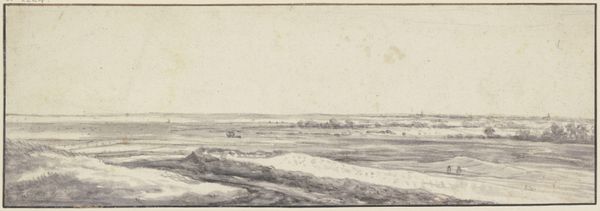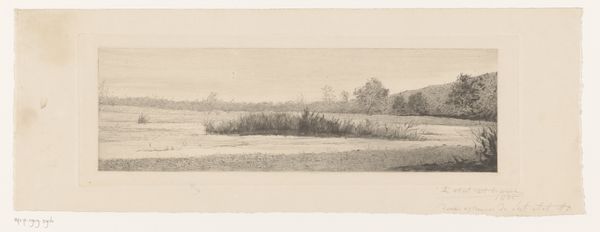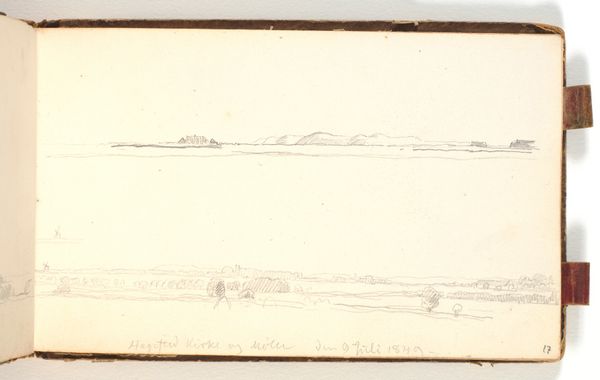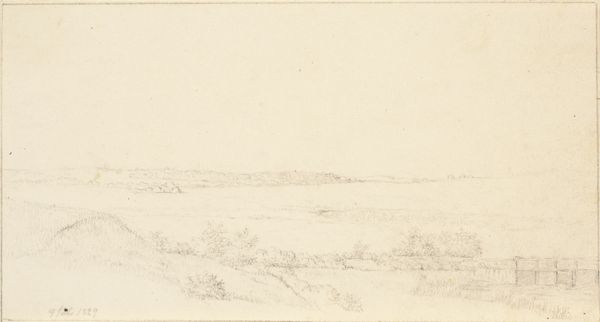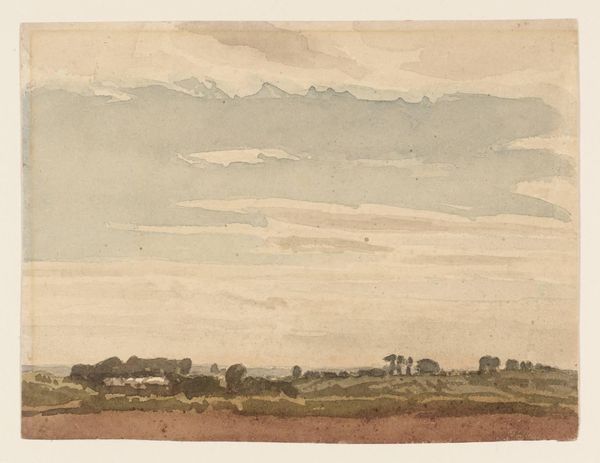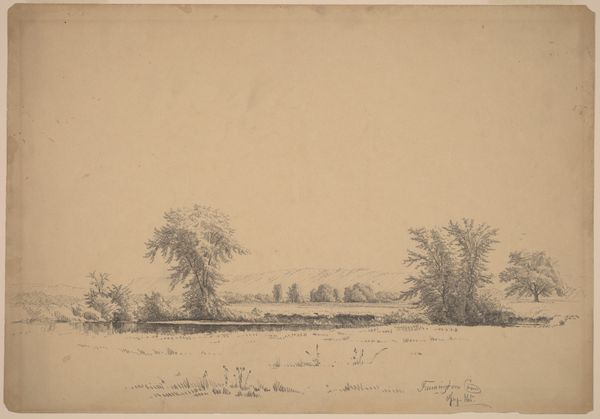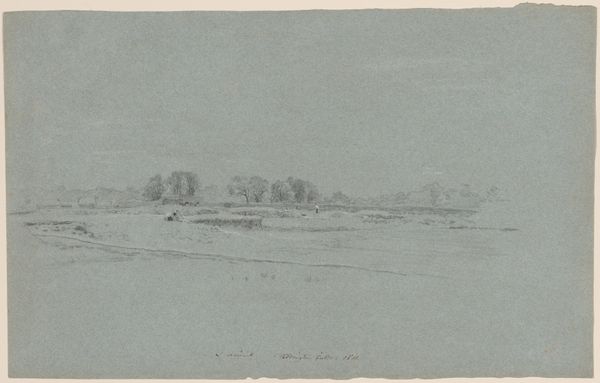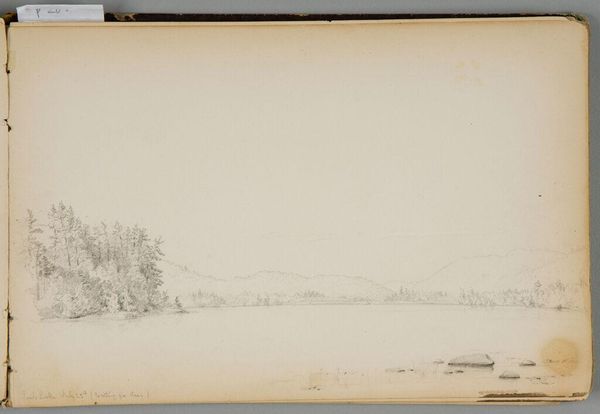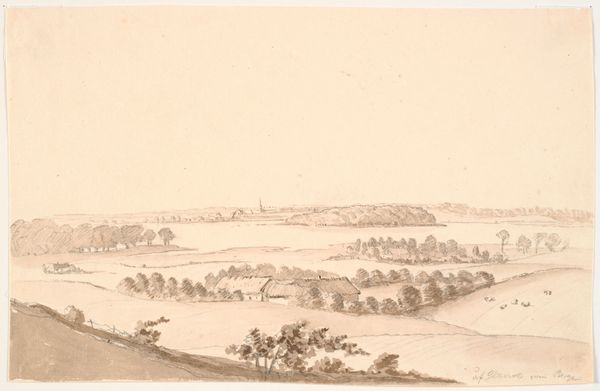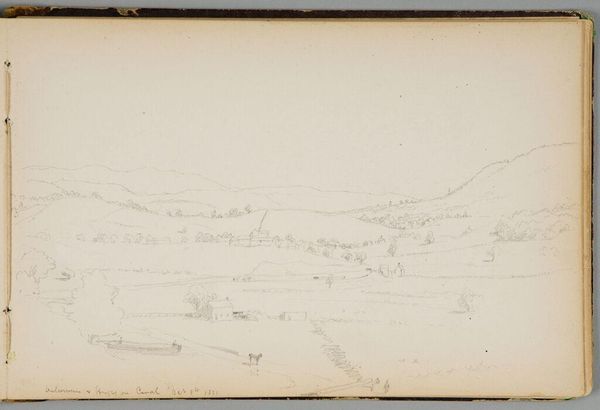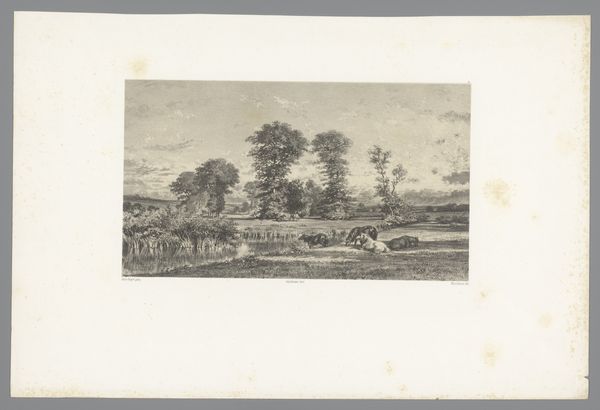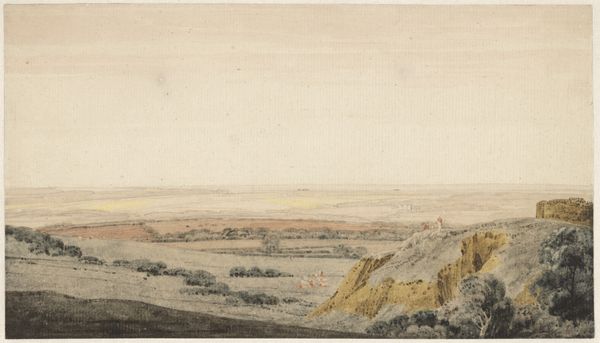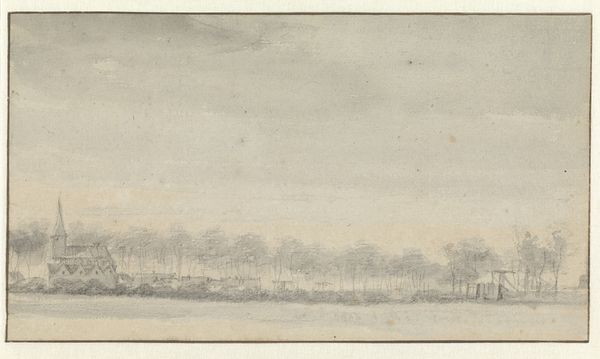
View from Rüsselsheim across the Main to Mainz and Hochheim 17 - 1829
0:00
0:00
Copyright: Public Domain
Curator: Carl Morgenstern's 1829 watercolor and drawing, "View from Rüsselsheim across the Main to Mainz and Hochheim," presents a tranquil panorama. Editor: It’s a bit…sedate, isn’t it? Quite muted, subdued. Curator: The subdued palette, though characteristic of the period, actually emphasizes the subtle gradations of tone, doesn't it? The layered approach directs the eye horizontally across the composition. The lines establish spatial organization and depth of field here. Editor: True, the hazy atmosphere does create a sense of vastness, a romantic yearning perhaps, for a simpler time? Given that the artwork originates from the early 19th century, what socio-economic realities is this landscape intentionally obscuring? Where are the impacts of industrialization, of urbanization, of social unrest? Curator: Industrialization was still nascent in many parts of Germany at this time. The absence could be interpreted as Morgenstern adhering to Romantic ideals of nature—the sublime existing separate from human intervention. Editor: Or maybe he’s actively participating in the construction of an idyllic vision meant to reassure a certain class about the stability of their world, even as immense change bubbled just below the surface. Do you see that in the formal aspects? How the serene sky almost dominates the pictorial space? Curator: It certainly implies a sense of order and harmony. However, focusing solely on absence seems a bit reductive. Observe the precise detailing in the foreground—the trees, the slight variations in the water's texture—they demonstrate technical mastery and an acute attention to observation. The romantic notion can still have intention with a view that can simply celebrate the majesty of the natural landscape. Editor: And in doing so, it potentially sanitizes the realities of life for many. So much is communicated, deliberately and indirectly, even in apparent serenity. Ultimately, landscape as ideology. Curator: I appreciate how you consistently encourage us to question inherent assumptions in these visual landscapes. It deepens the way we experience this era through these objects. Editor: Absolutely! Looking beneath the surface always reveals more than one anticipates. Thank you, it has been thought-provoking.
Comments
No comments
Be the first to comment and join the conversation on the ultimate creative platform.
